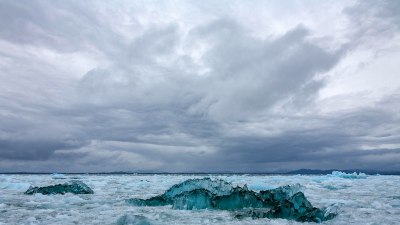What Causes Ice Storms
Explore the causes and effects of ice storms, with insights into their formation and prevention.

Ice storms, often regarded as one of nature's most hazardous phenomena, present unique challenges to communities across affected regions. These storms, characterized by freezing rain that coats surfaces in a thick layer of ice, can lead to severe disruptions and dangerous conditions. To understand the causes of ice storms, one must look closely at the specific meteorological conditions that give rise to these events.
Ice storms generally occur when a specific set of weather conditions align perfectly. The primary requirement for an ice storm is the presence of warm air aloft and cold air at the surface. This temperature inversion creates a scenario where moisture-laden clouds form and precipitation falls. As the precipitation descends through the warmer layer, it turns into rain. However, as this rain continues to fall through a layer of cold air, it does not freeze until it strikes the cold ground or other surfaces, leading to the formation of ice.
The process involves several steps: First, warm air must rise into the atmosphere. This can happen when a low-pressure system moves into an area, displacing colder air. As the warm air rises, it cools and condenses, forming clouds that can hold moisture. When the atmospheric conditions are right, the moisture will condense and eventually precipitate as rain. This rain falls through the cold air at the surface, where temperatures are at or just below freezing. Here, the rain becomes supercooled – it remains in liquid form despite being below the freezing point. Upon contact with cold surfaces, this supercooled rain instantly freezes, forming a layer of ice.
Several factors can exacerbate ice storm conditions. Geographic location plays a significant role; areas that are prone to frequent temperature fluctuations, such as the transition zones between cold polar air masses and warm tropical air masses, are more susceptible to ice storms. States within the central United States, particularly those in the Midwest and the Northeast, are often at higher risk due to their geographical positioning and climatic conditions.
Another key factor contributing to ice storms is the moisture availability in the atmosphere. The presence of a moisture-rich warm air mass is essential for the formation of ice storms. Such air masses often originate from the Gulf of Mexico, carrying moisture that can interact with cold air masses from the north. When these two air masses converge, conditions become ripe for the development of freezing rain.
The timing of these storms is critical as well. Ice storms typically occur during the transitional seasons of late fall, early winter, and early spring, when temperatures fluctuate around the freezing mark. This transitional period is when cold air masses collide with warmer ones most frequently, creating a breeding ground for ice storms.
Furthermore, weather systems, such as warm fronts, can also dramatically influence the likelihood of ice storms. A warm front is characterized by warm, moist air overriding cold, dense air. As the warm front rises over cold air, it cools, leading to condensation and the formation of precipitation. If the conditions are just right, this precipitation can result in freezing rain, which can precipitate an ice storm.
Ice storms can have dire consequences for communities, affecting transportation, power supply, and even public safety. Power lines covered in ice can sag and snap, leading to widespread electricity outages. Roads become treacherous and, at times, impassable. Drivers face increased risks of accidents, and emergency services can struggle to respond. The weight of the ice can lead to tree branches breaking and causing additional hazards on the ground.
To mitigate the effects of ice storms, several strategies can be employed. Communities are encouraged to invest in infrastructure that is resilient to ice accumulation, such as power lines that are buried underground or designed to withstand icy conditions. Public education campaigns aimed at preparing residents for potential ice storm scenarios can significantly enhance safety and readiness. Additionally, meteorological advancements allow for better forecasting of these events, providing communities with timely warnings to prepare, thereby reducing the potential impacts.
The causes of ice storms are multi-faceted and involve a complex interplay of atmospheric conditions. The presence of warm, moist air, cold air at the surface, and geographic and seasonal factors all contribute to the development of these dangerous weather events. Understanding these causes not only helps in better predicting ice storms but also in developing effective strategies to mitigate their effects. As climate patterns continue to evolve, staying informed about potential ice storms will be crucial for safety and preparedness in affected regions.











